Hemming silk, a delicate and luxurious fabric, requires finesse and precision. Whether you opt for the meticulous artistry of hand-hemming or the efficiency of machine-hemming, mastering the technique is essential for creating beautifully finished silk garments and projects.
In this guide, we’ll take you through the steps to hem silk easily using both methods. Hand-hemming involves the meticulous art of hand-stitching, ensuring a flawless finish that showcases the fabric’s elegance.
Alternatively, machine-hemming offers efficiency without sacrificing quality. Whichever method you choose, properly hemming silk not only preserves its inherent beauty and prevents fraying but also adds a professional touch that enhances comfort and longevity.
Discover the secrets to achieving a polished result in this comprehensive guide.

How to Hem Silk by Hand or Machine Easily?
Hemming silk, a delicate and luxurious fabric, requires fine finesse and attention to detail. Whether you choose to hem silk by hand or machine, mastering the art can open the door to creating beautifully finished silk garments and projects.
Here is a simplified guide on how to hem silk easily using both methods:
Hemming Silk by Hand: 6 Steps
Hemming silk by hand is a delicate and precise process that requires attention to detail and careful execution to achieve a flawless finish.
Here’s a step-by-step guide on how to hem silk by hand:
Step 1: Gather Your Materials
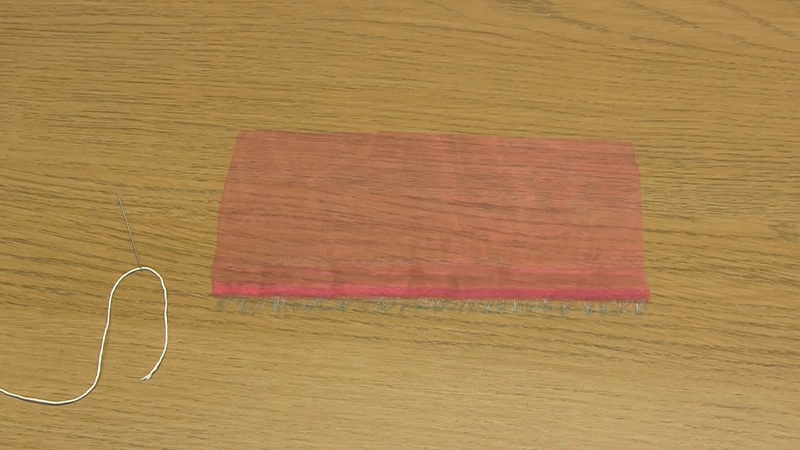
Begin by assembling the necessary materials: silk fabric, matching thread, hand-sewing needles, sharp scissors, pins, an iron, chalk, or a washable fabric marker.
Choosing the right tools is essential for a successful outcome.
Step 2: Mark the Hemline
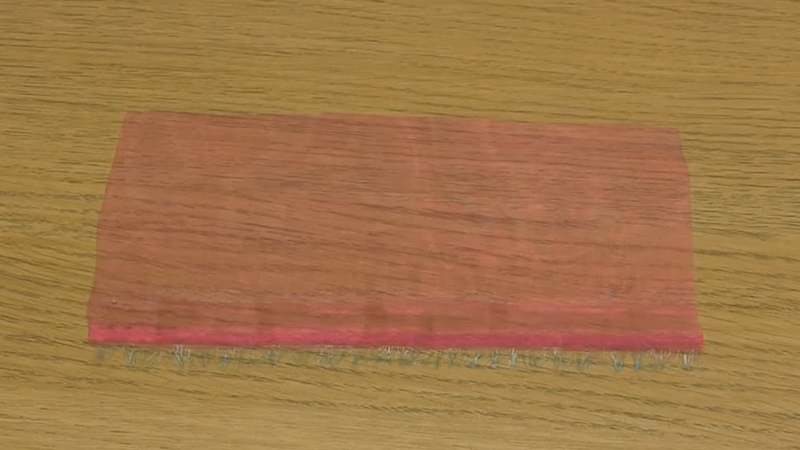
Use fabric chalk or a washable fabric marker to mark the desired hemline on the wrong side of the silk fabric. Ensure the line is straight and even, serving as your sewing guideline.
Step 3: Fold and Press
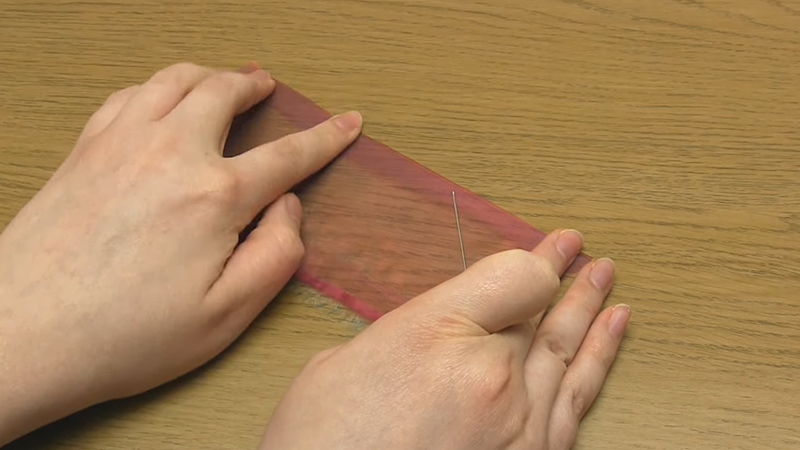
Delicately fold the fabric up along the marked line to create the hem. Press it gently with a cool iron to set the fold securely. This initial pressing will make sewing the hem more manageable and produce a crisp finish.
Step 4: Trim Excess Fabric
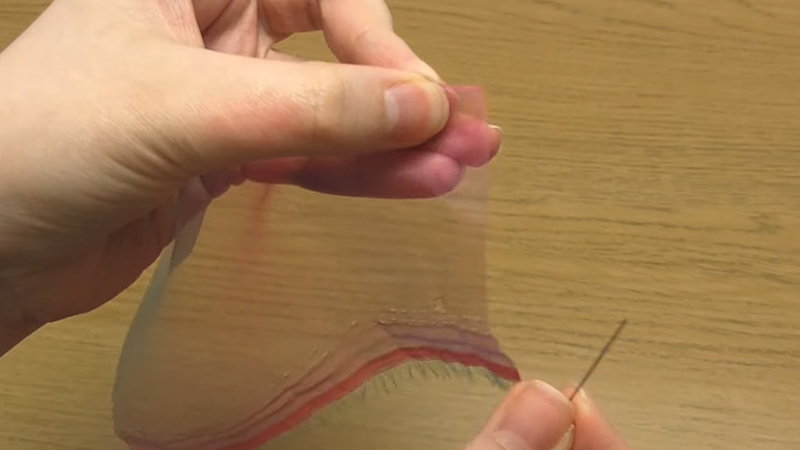
Trim any excess fabric using sharp scissors, leaving approximately 1/8 inch (3 mm) beyond the folded edge. Precise trimming is essential for a neat hem.
Step 5: Secure the Hem With Stitches
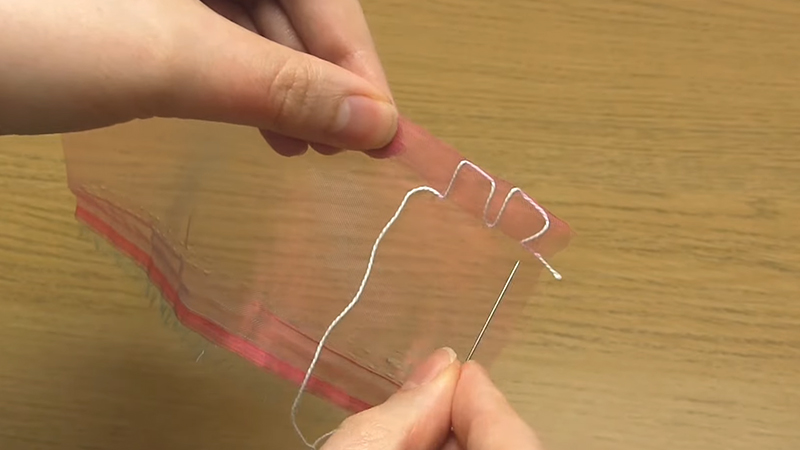
Thread your hand-sewing needle with matching thread and knot the end. Begin sewing along the folded edge, employing tiny, even stitches to secure the hem.
A basic running stitch typically works well for this purpose. Continue stitching until you reach the end, then knot the thread securely to ensure the hem stays in place.
Step 6: Final Touch
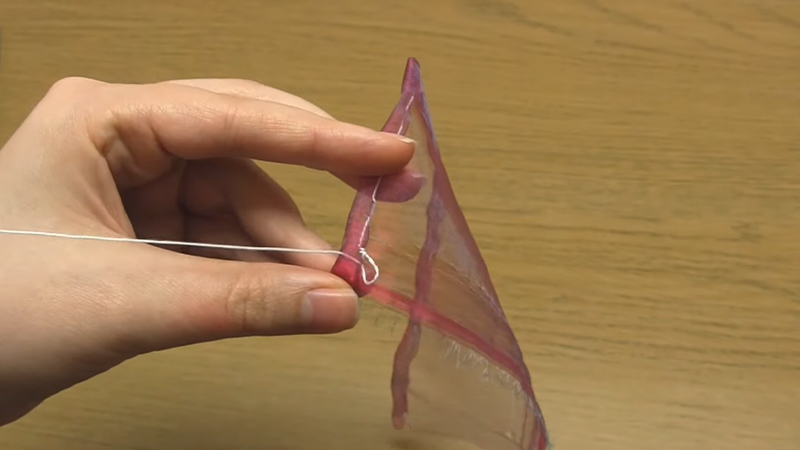
Trim any loose threads and provide the completed hem with one final press using the iron. This last press ensures the hem is flat, smooth, and wrinkle-free.
Hemming Silk by Machine: 7 Steps
Hemming silk by machine is more efficient than hand-sewing, and it can yield equally beautiful results when done correctly.
Here’s a step-by-step guide on how to hem silk using a sewing machine:
Step 1: Gather Your Materials
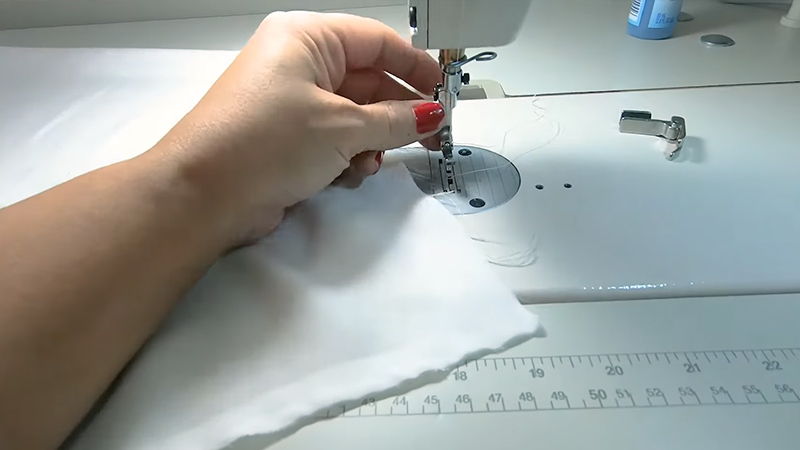
Begin by assembling all the necessary materials: silk fabric, matching thread, a sewing machine, a fine or silk needle, sharp scissors, pins, an iron, fabric chalk, or a washable fabric marker.
Ensure your sewing machine is in good working condition.
Step 2: Set Up Your Sewing Machine
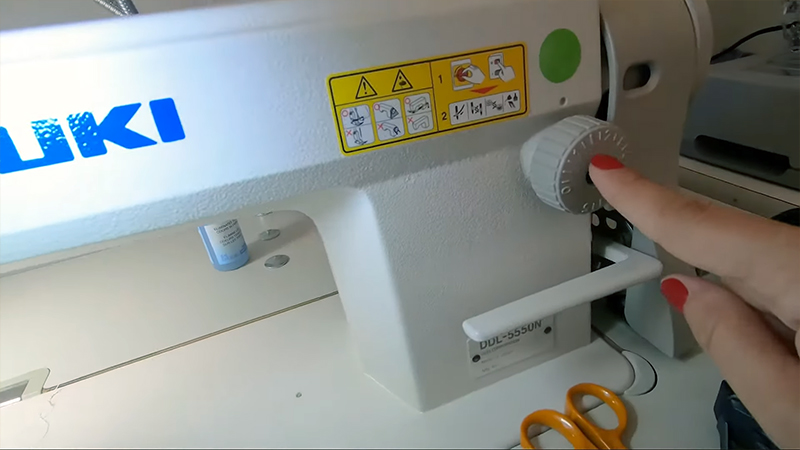
Thread your sewing machine with matching thread and install a fine or silk needle. Adjust your machine settings to a straight stitch with a small length, typically around 2 mm.
This finer stitch length helps prevent puckering in delicate silk fabric.
Step 3: Mark the Hemline
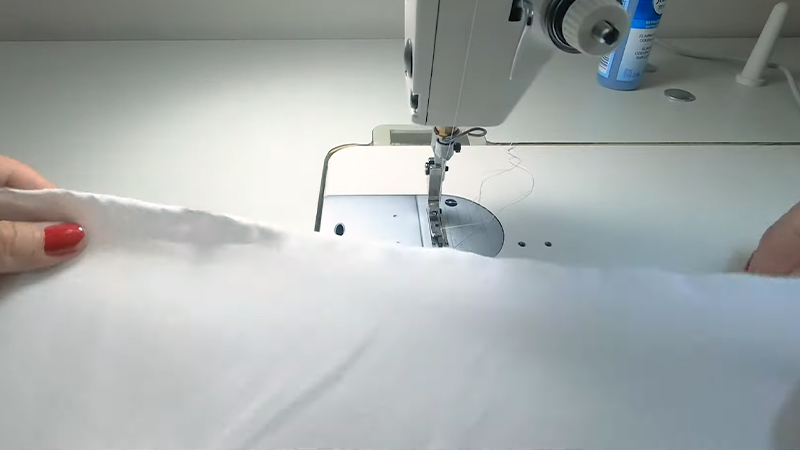
Use fabric chalk or a washable fabric marker to mark the desired hemline on the wrong side of the silk fabric. Ensure your line is straight and even; this marked line will guide your sewing.
Step 4: Fold and Pin
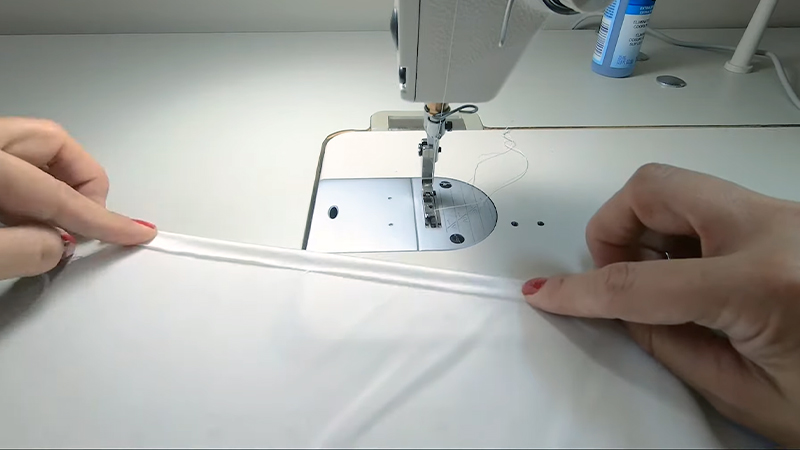
Gently fold the fabric up along the marked hemline to create the hem. Use pins to secure the folded fabric at regular intervals. Pinning ensures the fabric remains aligned while sewing and helps maintain a consistent hem width.
Step 5: Machine Stitch
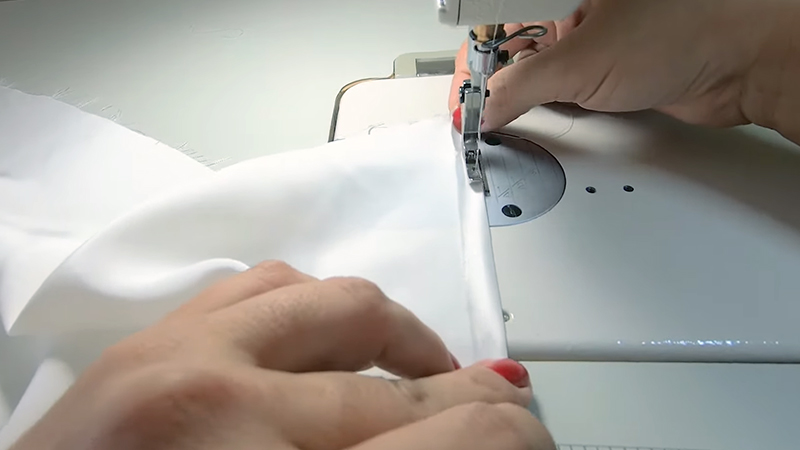
Start sewing at one end of the hem, carefully stitching along the folded edge. Use the sewing machine’s foot pedal to control the speed, keeping a steady hand to maintain control over the fabric.
Be sure to backstitch at the beginning and end of your stitching to secure the thread.
Step 6: Press the Hem
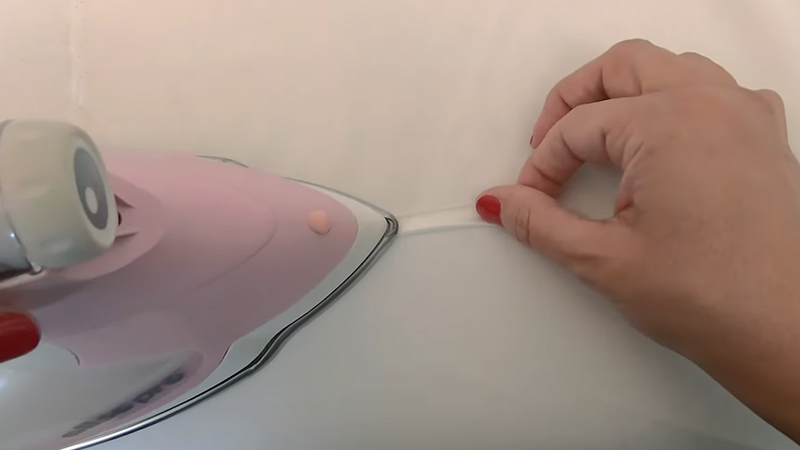
After machine stitching, press the hem with a cool iron to set it and give it a polished appearance. The pressing step is crucial to achieve a professional finish and ensure the hem is flat.
Step 7: Final Touch
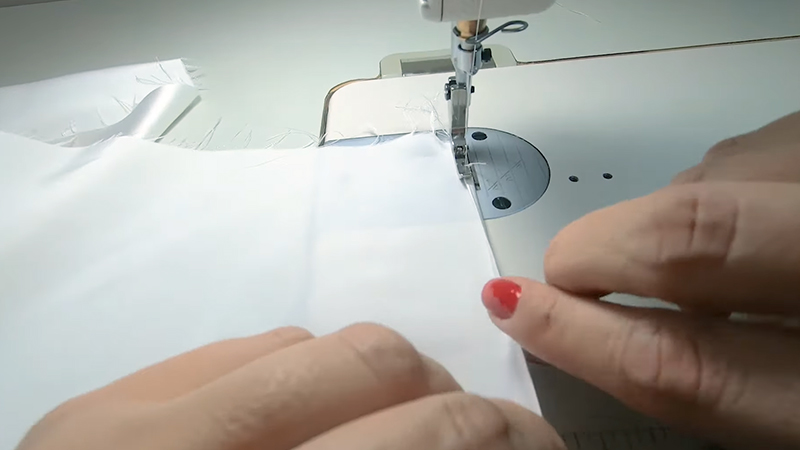
Trim any loose threads from the hem, and your machine-hemmed silk is ready for your project. This process provides clean and precise results, but it’s essential to handle the delicate fabric carefully and use the correct settings on your machine for the best outcome.
Why Is It Essential to Properly Hem Silk Fabric?
Silk, often called the “queen of fabrics,” holds a special place in the world of textiles due to its luxurious feel, exquisite appearance, and timeless elegance.
Crafting with silk demands precision and care in every step of the process, and one aspect that should never be overlooked is the proper hemming of silk fabric.
Here, we explore why it’s essential to hem silk fabric correctly:
Preserving the Elegance
Silk is renowned for its natural sheen, graceful drape, and opulent texture. You preserve these inherent qualities when you take the time to hem silk properly.
An expertly hemmed silk garment or project allows the fabric’s beauty to shine, enhancing its visual appeal.
Preventing Fraying
Silk fibers are exceptionally delicate, which makes them susceptible to fraying. Without a well-executed hem, the edges of your silk piece are prone to unraveling over time.
Proper hemming is the first defense against such deterioration, ensuring your creation maintains its integrity.
Achieving a Professional Finish
A neatly hemmed edge imparts a professional and refined finish to your silk creation. Whether it’s a silk blouse, an evening gown, or luxurious curtains, proper hemming elevates the piece’s overall quality, making it stand out as a symbol of craftsmanship and attention to detail.
Ensuring Longevity
Silk is an investment fabric chosen for its beauty and durability. Properly hemming silk significantly extends its lifespan.
The finished edges act as a protective barrier, safeguarding the fabric from wear and tear and ensuring that your silk piece remains pristine for years.
Enhancing Comfort
An accurately hemmed silk garment is more comfortable to wear. Rough or unfinished edges can irritate the skin, detracting from the luxurious comfort that silk is renowned for.
Proper hemming contributes to a comfortable and enjoyable wearing experience.
Supporting Versatility
Silk is versatile for various applications, from high-end fashion to interior decor. Proper hemming ensures that silk can fulfill its intended purpose effectively, adapting seamlessly to multiple projects and applications.
Personal Satisfaction
Hemming silk fabric correctly is a skill that brings a deep sense of satisfaction and pride. Knowing that you’ve taken the time and care to finish your project accurately adds to the joy of creating and the appreciation of silk’s splendor.
What’s the Difference Between Hand-hemming and Machine-hemming Silk?
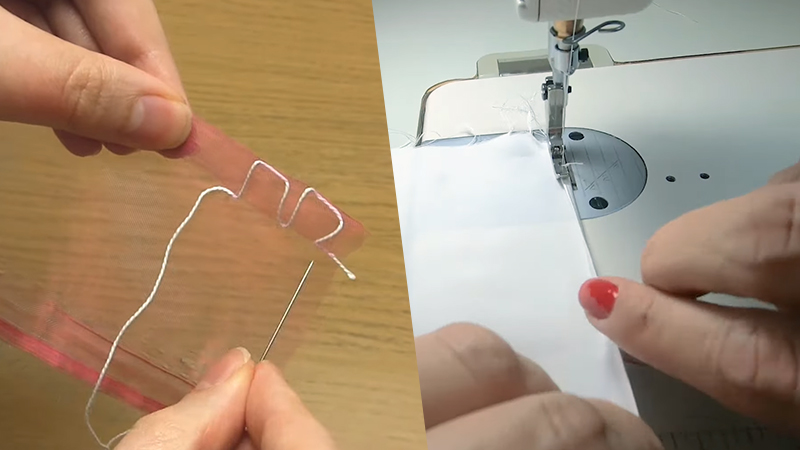
Hand-hemming and machine-hemming silk both serve the same purpose of finishing the raw edges of silk fabric, but they differ in several aspects, including the technique, time required, and the final result.
Here are the critical differences between hand-hemming and machine-hemming silk:
Technique
- Hand-Hemming: Hand-hemming silk involves sewing the hem using a needle and thread. This meticulous and precise technique allows fine control over each stitch. Popular hand-hemming stitches for silk include slipstitch, blind hem stitch, and catch stitch.
- Machine-Hemming: Machine-hemming silk is done using a sewing machine. It typically involves a straight stitch or a specialized hemming stitch. Machine-hemming is generally faster and requires less manual dexterity compared to hand-hemming.
Time and Efficiency
- Hand-Hemming: Hand-hemming is time-consuming, especially for intricate or wide hems. It requires patience and careful attention to detail.
- Machine-Hemming: Machine-hemming is faster and more efficient, making it suitable for projects with tight deadlines or when hemming multiple silk items.
Precision
- Hand-Hemming: Hand-hemming allows for the highest level of precision and control over the stitching. It is ideal for creating nearly invisible hems and delicate silk garments.
- Machine-Hemming: While machine-hemming is precise, achieving the same level of invisibility as hand-hemming can be challenging, especially on lightweight or sheer silk fabrics.
Strength and Durability
- Hand-Hemming: Hand-hemming can create exceptionally strong and durable hems when done correctly. The individual hand stitches can withstand stress and wear over time.
- Machine-Hemming: Machine-hemming provides strength and durability but may not be as resilient as hand-hemming, particularly in high-stress areas of a garment.
Skill Level
- Hand-Hemming: Hand-hemming requires more skill, practice, and patience. It is often favored by experienced seamstresses and those who prioritize high craftsmanship.
- Machine-Hemming: Machine-hemming is more accessible to beginners and those looking for a quicker hemming method. It requires less manual dexterity and can produce satisfactory results with practice.
Appearance
- Hand-Hemming: Hand-hemming can result in nearly invisible hems, especially when using techniques like slip stitching. This is preferred for formal and high-end silk garments.
- Machine-Hemming: Machine-hemming provides a neat and consistent appearance but may have visible stitching, which may be acceptable for less formal or everyday wear.
FAQs
Can I use a regular sewing needle for hemming silk?
It’s recommended to use a fine or silk needle, specifically designed for delicate fabrics like silk, to prevent damage.
Do I need to use silk thread when hemming silk fabric?
While silk thread is ideal, you can use high-quality polyester thread that matches your silk fabric’s color and weight.
Is it necessary to press the silk after hemming?
Yes, pressing the hem with a cool iron is crucial to set the stitches and achieve a polished appearance.
How do I prevent the silk from puckering when using a sewing machine?
Use a shorter stitch length (around 2 mm), and ensure the silk is stabilized adequately with pins or fusible web tape.
Can I use fabric glue instead of sewing for hemming silk?
Fabric glue can be an option for securing the hem, but stitching is recommended for a more durable finish.
To Recap
Hemming silk, whether by hand or machine, is a skill that allows you to unlock the full potential of this exquisite fabric. Throughout this guide, we’ve provided simplified steps and insights to make the hemming silk effortless.
By following these techniques, you can preserve the elegance of silk, prevent fraying, and achieve a professional finish that adds to the longevity and comfort of your silk creations.
Whether you choose the precision of hand-hemming, where every stitch is a testament to craftsmanship, or the efficiency of machine-hemming for faster results, the key is to handle silk with care and attention to detail.
With practice, you’ll master the art of hemming silk, creating garments and projects that radiate luxury and refinement. Embrace the artistry of silk, and let your creations shine with perfectly hemmed edges.
Leave a Reply